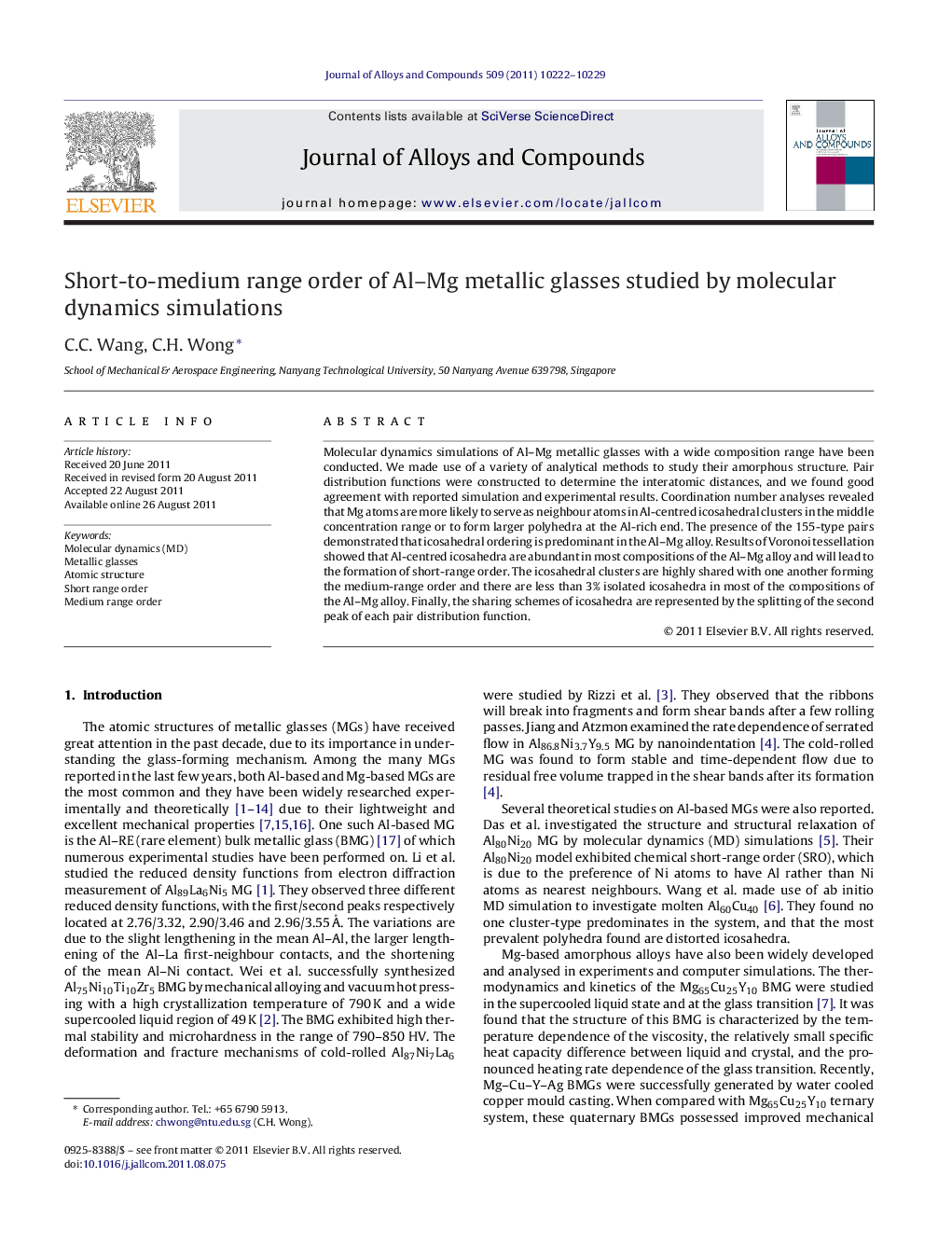| کد مقاله | کد نشریه | سال انتشار | مقاله انگلیسی | نسخه تمام متن |
|---|---|---|---|---|
| 1616776 | 1005669 | 2011 | 8 صفحه PDF | دانلود رایگان |

Molecular dynamics simulations of Al–Mg metallic glasses with a wide composition range have been conducted. We made use of a variety of analytical methods to study their amorphous structure. Pair distribution functions were constructed to determine the interatomic distances, and we found good agreement with reported simulation and experimental results. Coordination number analyses revealed that Mg atoms are more likely to serve as neighbour atoms in Al-centred icosahedral clusters in the middle concentration range or to form larger polyhedra at the Al-rich end. The presence of the 155-type pairs demonstrated that icosahedral ordering is predominant in the Al–Mg alloy. Results of Voronoi tessellation showed that Al-centred icosahedra are abundant in most compositions of the Al–Mg alloy and will lead to the formation of short-range order. The icosahedral clusters are highly shared with one another forming the medium-range order and there are less than 3% isolated icosahedra in most of the compositions of the Al–Mg alloy. Finally, the sharing schemes of icosahedra are represented by the splitting of the second peak of each pair distribution function.
► Atomic structures of Al–Mg MGs have been systemically studied by MD simulations.
► We find more full icosahedra present in these systems than other MGs.
► Icosahedra are the primary short-range order in Al–Mg MGs.
► Icosahedra are connected with one another to form medium-range order.
► Splitting of the second peak in PDFs is the result of icosahedral sharing.
Journal: Journal of Alloys and Compounds - Volume 509, Issue 42, 20 October 2011, Pages 10222–10229